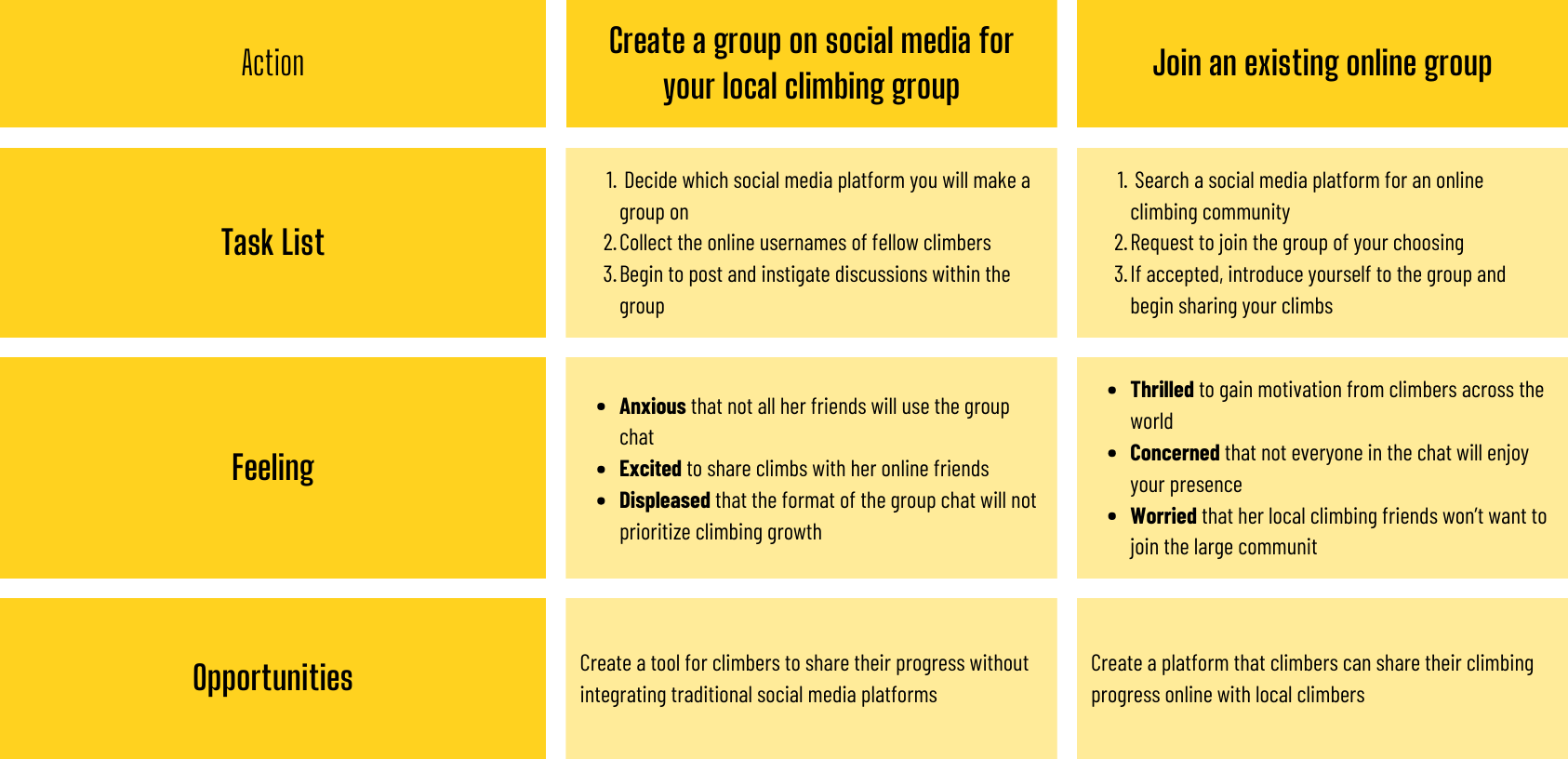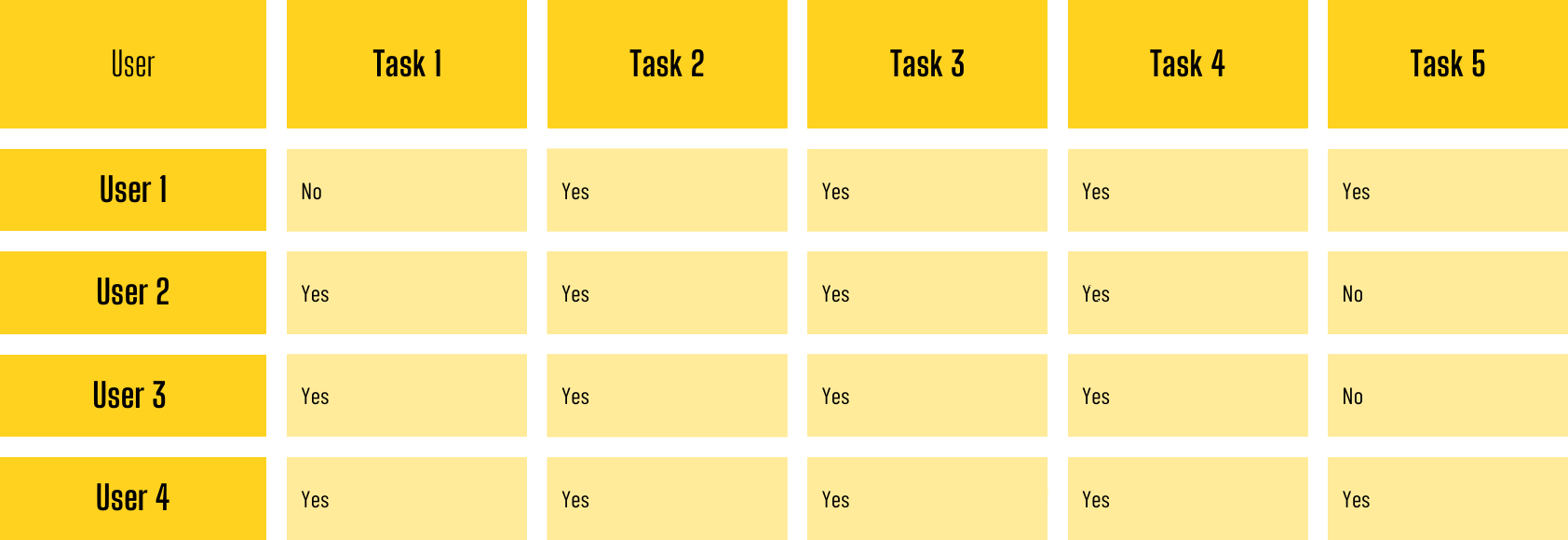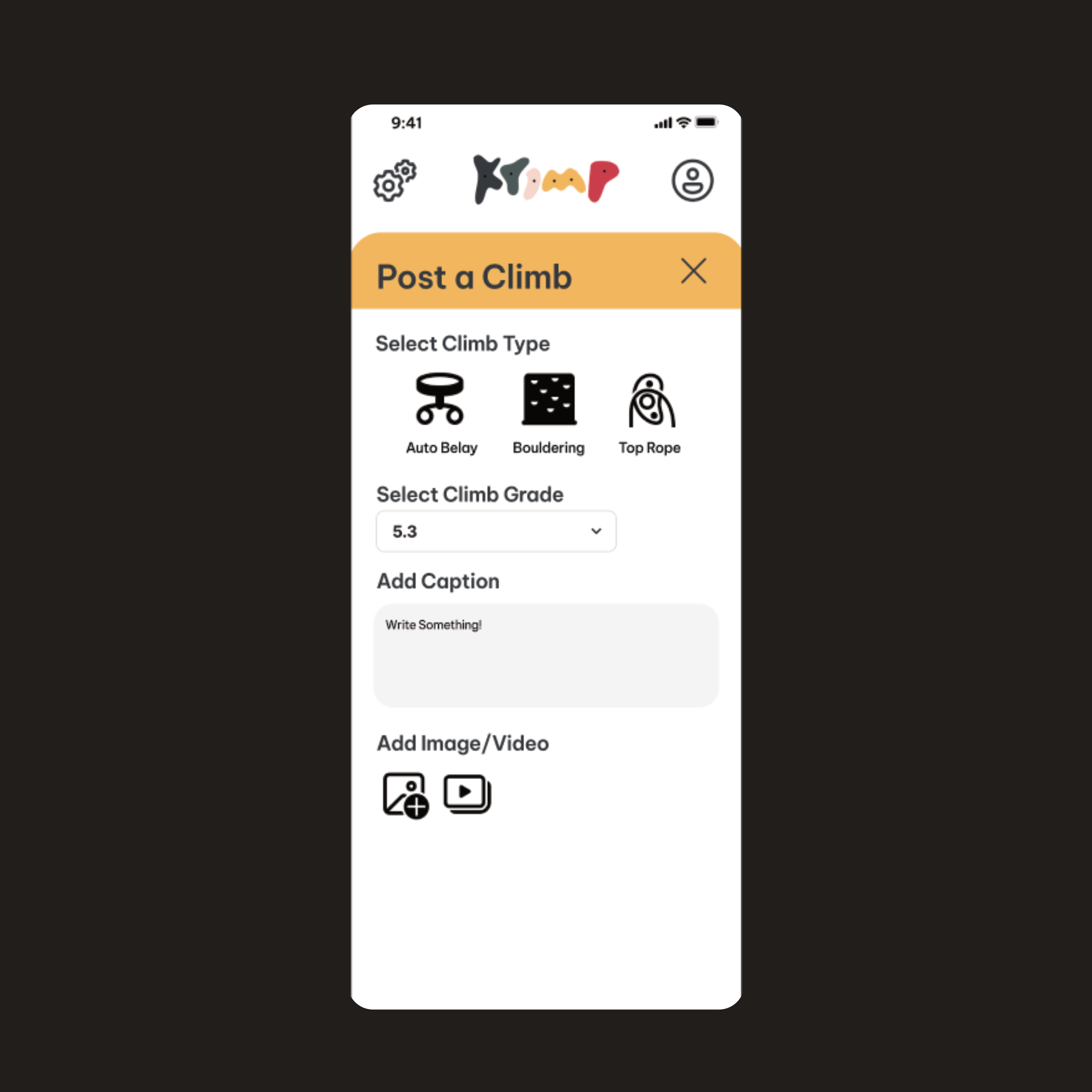Project Type
Role
Academic
UX Designer
The increasing popularity of indoor Rock Climbing has created a subculture where sharing progress with others is increasingly important. Modern climbing grading systems provide climbers with a quantitative method for tracking their skill progression. However, there is a lack of tools for climbers to share said progress. Krimp is an app that climbers can use to share photos and videos of their climbs, join climbing groups, and locate local climbing gyms.
Project Summary
Design Challenge
As an avid indoor rock climber, I have become a part of social circles formed within climbing gyms. Luckily, when I began climbing, I had a mutual friend who introduced me to fellow climbers. The unfortunate reality is that many new climbers can easily be intimidated and antisocial when they start attending gyms.
Climbing is a sport that requires perseverance and motivation to meet desired goals. Rock Climbers can connect via traditional social media platforms. However, these platforms lack the sense of community that could inspire climbers to push themselves to that next level. Climbers who lack a sense of community within their gyms could easily become frustrated during plateaus. This frustration may force climbers to visit gyms less frequently or quit the sport altogether.
Problem
Solution
Krimp is an online platform that inspires climbers to push their limits by comparing and contrasting their climbing experiences with those of others. Many people struggle with meeting people in real life. The Krimp app can enable climbers of all skill levels to share their progress within a comfortable environment.
Research
To initially understand a potential user’s needs, I conducted an online survey that was shared with the members of a local climbing gym. Through this survey, I gathered both qualitative and quantitative data that helped the ideation process of Krimp.
Primary Research
In addition to the primary research gained from my survey, I researched multiple peer-reviewed journals that analyzed the benefits of social engagement at climbing gyms. One particular journal found that the social dynamic of rock climbing has a variety of benefits.
Secondary Research
46.8% of surveyed climbers self-reported as introverts, though 74.1% of participants reported engaging in social behavior during climbing sessions.
This data suggested that the nature of rock climbing gyms may foster environments that enhance the social nature of introverts.”
Posner, L. (2020). Virtually invincible: The impact of social media presentation on rock climbing (Master’s thesis). University of Nevada, Las Vegas. UNLV Theses, Dissertations, Professional Papers, and Capstones. https://doi.org/10.34917/19412154
Pain Point
Climbers can be uncomfortable sharing their climbing progress on traditional social media
Posting photos or videos of climbs can cause unnecessary social anxiety, impact self-esteem, and create a desire for online validation.
Sharing one’s progress for anything online can be frightening, let alone on a platform that most people don’t understand.
App Constraints
Must be visually distinguishable from traditional social media
Requires a knowledge of climbing terminology
Technical Constraints
Users may have to influence fellow climbers to download the app
Gen Z utilizes group features on social media more than third-party apps
Social Constraints
Making the app affordable/free to compete with free social media
Gym locating features may require consent from third parties
Business Constraints
Market Research
Synthesis
User Persona
Expereience Map
User goal: Bridget wants to connect with her climbing friends using an online app/service
Bridget’s goal is to connect with her existing climbing friend using an online app/service. Keeping this in mind, it becomes clear that an independent climbing social media platform would provide the best user experience for Bridget. Ensuring that the platform is removed from other social media can help maximize climbing-related interaction, thus improving Bridget’s overall climbing experience.
Opportunity
Ideation
Digital Wireframes
User testing
Goal: Post an auto-belay climb with a 5.6 grade, caption, and video
Task 1: Find the post button
Task 2: Select the auto-belay climb type
Task 3: Select a climb grade
Task 4: Add a caption and video
Task 5: Post the climb
Task Revisions
Removed the post button from the select climb screen
This revision treats the post button as a reminder to continue the user journey
Changed the selection colour from grey to yellow
This indicates to the user that yellow is a color of significance in the user journey
Additionally, it better aligns with the app’s colour palette
Visual Identity
Colour Palette
Indoor rock climbing gyms are home to many vibrant colours. The holds on climbing walls often have varying bright colours to distinguish climbs from one another. Keeping this in mind, I felt that the Krimp logo and app would greatly benefit from utilizing these same bright colours. The bright yellow and red are two primary colours that well represent the vibrant hobby that is rock climbing. The off-white, white, and black colours with the palette help give the app a modern, sleek aesthetic that brings the whole brand together.
App name
Climbers have developed a thesaurus of terms that represent emotions or feelings towards climbing when ordinary language doesn’t suffice. Terms such as slab, dyno, and beta are frequently used within climbing gyms around the world. Crimp is one of the most popular terms to describe a style of climbing holds. Crimp holds are often small and require climbers to hold them with the very edge of their fingertips. In the climbing community, crimps are recognized as one of the hardest aspects of climbing. This disdain for crimps represents the communal nature of rock climbers who work together to get past difficult obstacles. To give the name some flair, the “c” in crimp was changed to a “k”. I think that the unique spelling of the name indicates to users that the app’s name is not correlated to the traditional use of the word crimp.
Logo
The app’s logo uses climbing holds to form the name “krimp” in a variety of colours. By doing so, the climbing theme is conveyed while clearly presenting the app’s name. The dots inside each letter are supposed to mimic the screws that hold the holds on a climbing wall. This logo properly presents the app as a climbing platform through the use of a creative typeface and a variety of colours.















